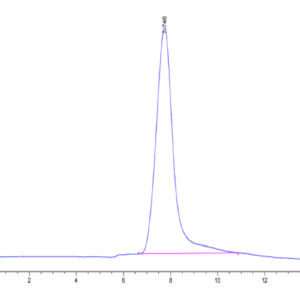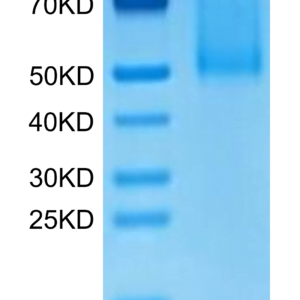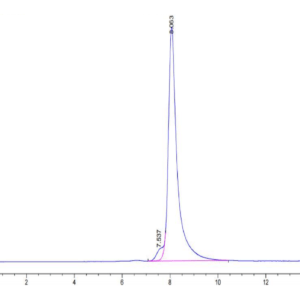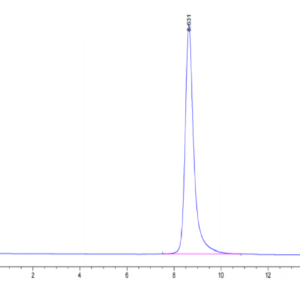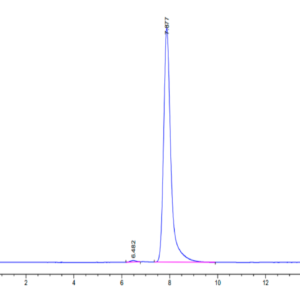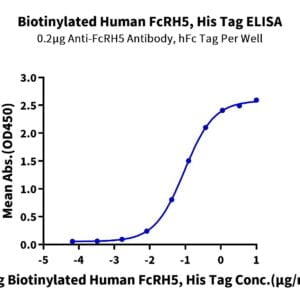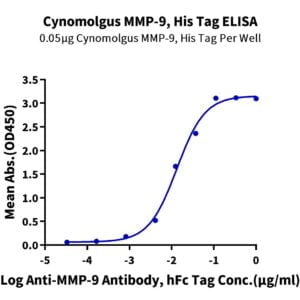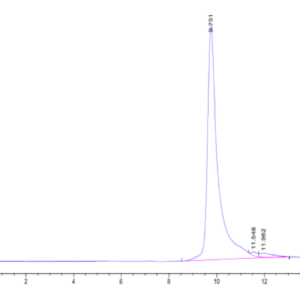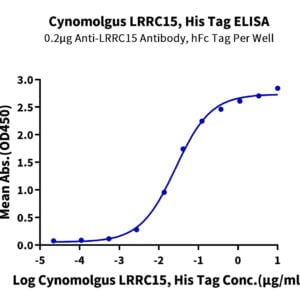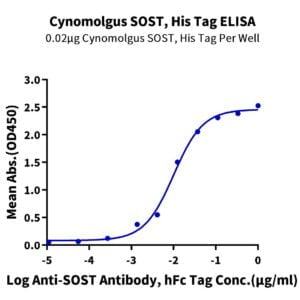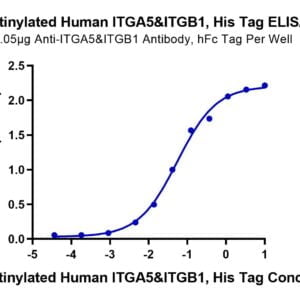| Weight | 1 lbs |
|---|---|
| Dimensions | 9 × 5 × 2 in |
| accession | P00749 |
| express system | HEK293 |
| product tag | C-His |
| purity | > 95% as determined by Tris-Bis PAGE;> 95% as determined by HPLC |
| background | Plasminogen activator, urokinase (uPA) is a secreted serine protease, cleaving the sequence Cys-Pro-Gly-Arg560-Val561-Val-Gly-Gly-Cys in plasminogen to form plasmin. Dysregulation of PLAU is often accompanied by various cancers and PLAU inhibition could suppress tumor growth. Collectively, PLAU is necessary for tumor progression and can be a diagnostic and prognostic biomarker in HNSCC. |
| molecular weight | The protein has a predicted MW of 17.9 kDa (long chain A), 29.2 kDa (chain B) and 15.3 kDa (N-terminal fragment). The protein migrates to 30-38 kDa (chain B) and 17 kDa (N-terminal fragment) based on Tris-Bis PAGE result. |
| available size | 100 µg, 500 µg |
| endotoxin | Less than 1EU per μg by the LAL method. |
Human PLAU/uPA Protein (active form) 3495
$300.00 – $1,000.00
Summary
- Expression: HEK293
- Active: Yes (catalytic)
- Amino Acid Range: Ser21-Leu431
Human PLAU/uPA Protein (active form) 3495
| protein |
|---|
| Size and concentration 100, 500µg and lyophilized |
| Form Lyophilized |
| Storage Instructions Valid for 12 months from date of receipt when stored at -80°C. Recommend to aliquot the protein into smaller quantities for optimal storage. Please minimize freeze-thaw cycles. |
| Storage buffer Shipped at ambient temperature. |
| Purity > 95% as determined by Tris-Bis PAGE |
| target relevance |
|---|
| Plasminogen activator, urokinase (uPA) is a secreted serine protease, cleaving the sequence Cys-Pro-Gly-Arg560-Val561-Val-Gly-Gly-Cys in plasminogen to form plasmin. Dysregulation of PLAU is often accompanied by various cancers and PLAU inhibition could suppress tumor growth. Collectively, PLAU is necessary for tumor progression and can be a diagnostic and prognostic biomarker in HNSCC. |
| Protein names Urokinase-type plasminogen activator (U-plasminogen activator) (uPA) (EC 3.4.21.73) [Cleaved into: Urokinase-type plasminogen activator long chain A; Urokinase-type plasminogen activator short chain A; Urokinase-type plasminogen activator chain B] |
| Gene names PLAU,PLAU |
| Protein family Peptidase S1 family |
| Mass 9606Da |
| Function Specifically cleaves the zymogen plasminogen to form the active enzyme plasmin. |
| Catalytic activity #N/A |
| Subellular location Secreted . |
| Tissues Expressed in the prostate gland and prostate cancers. |
| Structure Found in high and low molecular mass forms. Each consists of two chains, A and B. The high molecular mass form contains a long chain A which is cleaved to yield a short chain A. Forms heterodimer with SERPINA5. Binds LRP1B; binding is followed by internalization and degradation. Interacts with MRC2. Interacts with PLAUR. In complex with SERPINE1, interacts with PLAUR/uPAR (PubMed:15053742). Interacts with SORL1 and LRP1, either alone or in complex with SERPINE1; these interactions are abolished in the presence of LRPAP1/RAP (PubMed:15053742). The ternary complex composed of PLAUR-PLAU-PAI1 also interacts with SORLA (PubMed:15053742). |
| Post-translational modification Phosphorylation of Ser-158 and Ser-323 abolishes proadhesive ability but does not interfere with receptor binding.; Produced as an inactive single-chain protein (pro-uPA or sc-uPA), is processed into the active disulfide-linked two-chain form of PLAU/uPA by a proteolytic event mediated, at least, by TMPRSS4. |
| Target Relevance information above includes information from UniProt accession: P00749 |
| The UniProt Consortium |
Data
Publications
Publications
| pmid | title | authors | citation |
|---|---|---|---|
| We haven't added any publications to our database yet. | |||
Protocols
| relevant to this product |
|---|
Documents
| # | ||
|---|---|---|
| Please enter your product and batch number here to retrieve product datasheet, SDS, and QC information. | ||



